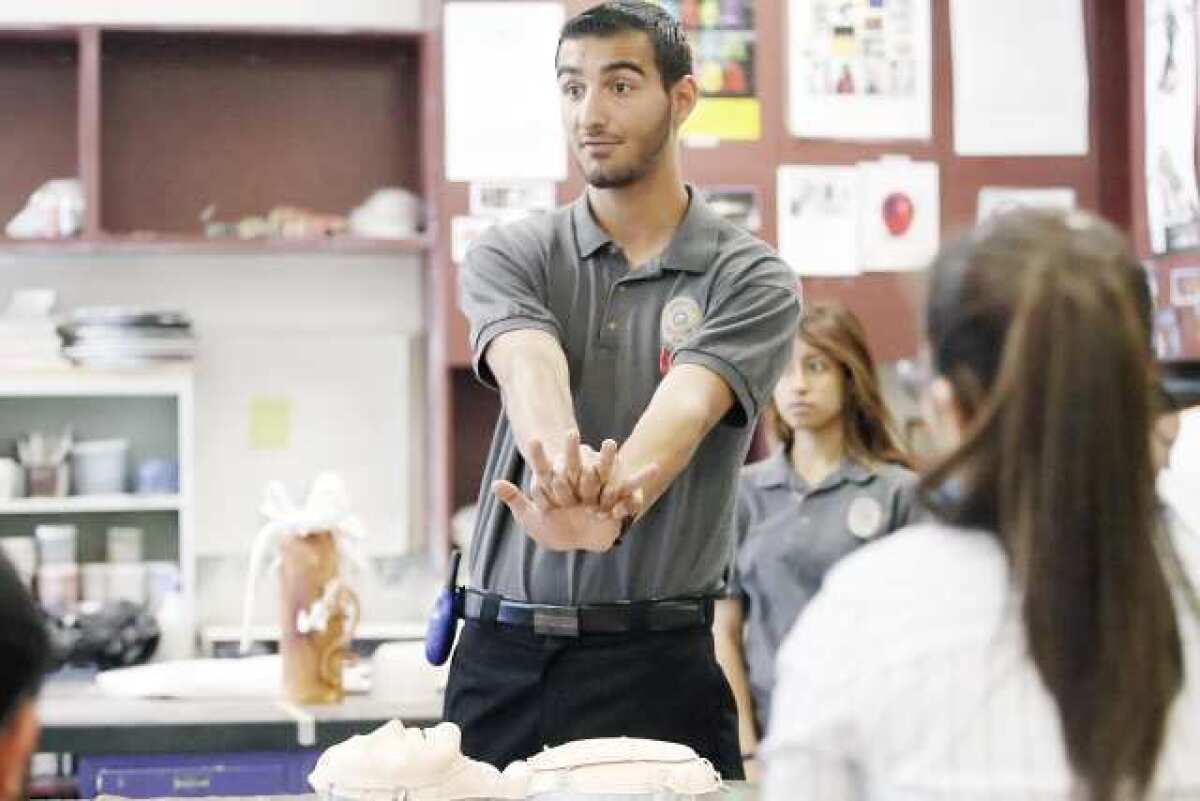Glendale students learn the basics of CPR as part of nationwide campaign

- Share via
When an activity results in broken bones, it is usually a sign to desist. So Hoover High School senior Sasoon Amerian had his work out cut out for him Thursday as he set about training his schoolmates on how to administer hands-only CPR.
“The ribs probably are going to break,” said Sasoon, 18, a member of the Hoover High School Public Safety Academy. “It is alright if they break, just continue, even though it is going to be a little scary.”
The lesson, which was conducted using a dummy, was one of dozens taking place in classrooms throughout the campus as part of Sidewalk CPR, a nationwide event designed to teach members of the public how to assist someone who has stopped breathing.
The technique, known formally as cardiopulmonary resuscitation, involves rapidly compressing the chest so as to manually create circulation. It can restore partial flow of oxygenated blood to the brain and heart and delay serious damage.
At Hoover, the training was conducted by 80 students who are members of the school’s Public Safety Academy previously certified in professional rescuer CPR and the use of an automatic defibrillator. They visited 48 different classrooms where they trained 1,300 students, said coordinator Kristine Lowe.
National data shows that just 36% of people who suffer cardiac arrest receive CPR from a bystander, Lowe said.
“They say it is mostly because the public doesn’t have the time to train and doesn’t know how to train, or they feel like they might hurt somebody and do the wrong thing,” Lowe said.
She teaches her students that the only way to harm a victim is by not doing anything.
The student trainers walked participants through the steps of CPR, including dialing 911, checking the immediate area for safety hazards, checking the victim’s breathing and administering chest compressions.
Students practiced on a dummy, with a clicking noise signaling the breaking of ribs, which can be necessary during the procedure.
Training students to respond to medical emergencies and how to administer CPR will make for a safer community, Amerian said.
“I think CPR is the first thing people should know,” Amerian said. “I think they should know the signs of heart attack and stroke, because those are common things that happen. They should know the Heimlich maneuver because people all over the world choke on things, especially at Thanksgiving.”
About 80% of medical emergencies occur in the home, meaning that an individual would most likely perform CPR on a family member or friend.
“If a family member or friend passes out if they know CPR then they are going to act fast and save the person’s life,” said student trainer Alex Rangel.
-- Megan O’Neil, Times Community News
Twitter: @megankoneil